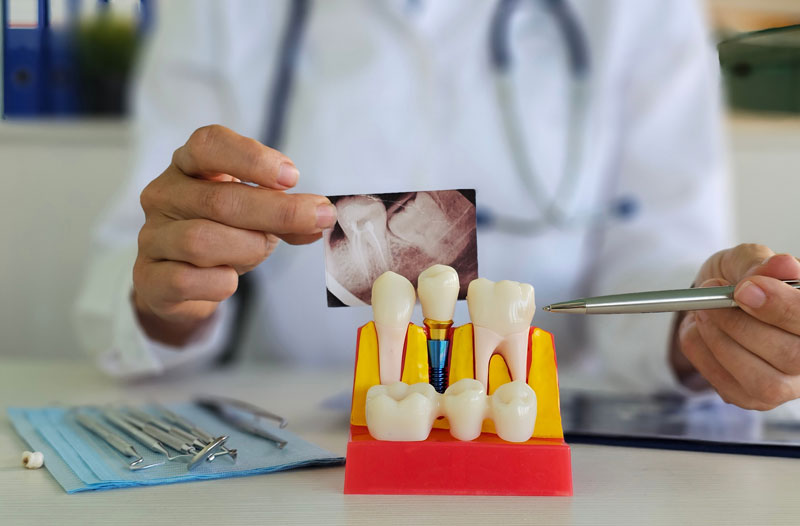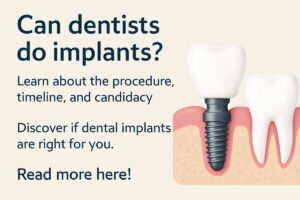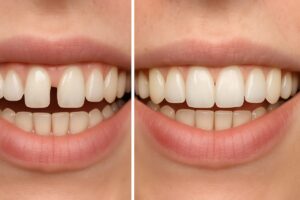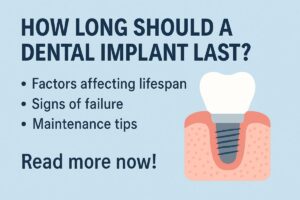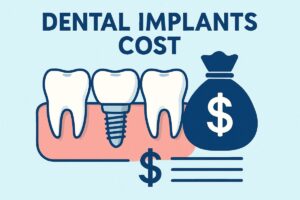Dental implant replacement is a tailored solution for those needing to restore the function and appearance of their dental implants. Although similar in nature to the initial implant installation, replacement involves a unique set of considerations. Common reasons for requiring a dental implant replacement may include damage to the existing implant, wear and tear over time, or a shift in the surrounding bone or tissue. In contrast to the initial installation, replacement primarily focuses on correcting specific issues with the current implant setup. This process ensures that your smile remains structurally sound and aesthetically pleasing. By comprehending these nuances, dental patients can better prepare for the journey towards renewed oral health and confidence.
Distinct from initial installations, dental implant replacements address prior complications directly while adapting to changes in oral health. Patients often seek replacements when the integrity of their original implant diminishes. Whether due to infection, fracture, or bone loss, solutions are crafted to meet individual needs. Each replacement requires a personalized approach, guaranteeing a precise treatment tailored to the unique circumstances of each patient. This attention to detail and the strategic planning involved form the bedrock of successful dental restorations. As such, understanding the necessity and mechanisms of dental implant replacements can empower you to take the next steps confidently.
Identifying Signs for Dental Implant Replacement
Being attuned to warning signs can aid in determining when a dental implant replacement is needed. Often, discomfort or notable changes in the mouth signal underlying issues with the implant. Persistent pain, instability, or changes in the surrounding gum tissue may suggest that a visit to your dental professional is warranted. It’s crucial to address these early symptoms to mitigate further complications. Recognizing these signs means that timely interventions can safeguard your oral health and prevent escalation of problems that might result in additional procedures.
Underlying causes for the need for replacement can be diverse, ranging from general wear and trauma to biological rejection. Conditions like bone resorption or bacterial infections can compromise the implant’s success, highlighting the importance of regular dental check-ups. These check-ups allow for early detection and appropriate response to any adverse developments in oral health. By acting promptly upon identifying signs of compromise, dental patients can maintain their oral health effectively. Recognizing the symptoms and understanding the causes is the first step toward maintaining a brilliant and functional smile.
Steps for a Seamless Dental Implant Replacement
Embarking on a dental implant replacement journey involves several crucial steps, each tailored to ensure the best outcomes. The process begins with a comprehensive evaluation, assessing the existing implant’s condition and the overall oral health landscape. This step is critical for planning an effective strategy, tailored to the patient’s unique dental architecture. In this phase, dental professionals determine whether any preparatory treatments, such as bone grafting, are necessary to support a new implant. Once the evaluation is complete, a meticulous plan is developed, guiding the subsequent surgical intervention.
The surgical phase involves removing the compromised implant and preparing the site for its replacement. Depending on the specific needs, the procedure might be staged, allowing for necessary healing before the new implant is placed. Post-surgery, patients can expect a recovery period during which they must adhere to specific care guidelines to ensure optimal healing. These guidelines include maintaining excellent oral hygiene and attending scheduled follow-up visits. Understanding and following the steps of the replacement process is vital to achieving a successful, long-lasting result. By recognizing the intricacies of each phase, you can approach the journey with confidence and clarity.
Ensuring Long-Term Success with Dental Implant Care
Continued success following a dental implant replacement hinge on diligent care and awareness of potential complications. At Dentistry By Design it’s essential to maintain gentle yet thorough oral hygiene practices to prevent infection and support healing. Patients should regularly attend check-ups, allowing dental professionals to monitor the implant’s integration with the jawbone and surrounding tissues. Regular consultations not only help in early detection of potential issues but also reinforce proper care techniques and ensure the implant’s longevity.
Complications such as swelling, discomfort, or unusual changes should be addressed with your dental provider immediately. Implementing a routine that includes appropriate cleaning techniques and consistent dental visits anchors the overall success of the implant. Furthermore, understanding the financial investment of dental implant replacements underscores their long-term benefits. Though initial costs might vary, the resulting restoration often justifies the expenditure by providing lasting functionality and confidence. In navigating these aspects wisely, you can significantly contribute to the sustained health of your implants.
Are you ready to restore your smile at our skilled and trusted dental practice? Don’t wait to get the smile of your dreams with us. Get in contact with our doctor, Dr. Harroz and our exceptional team at Dentistry By Design to schedule an appointment today!

